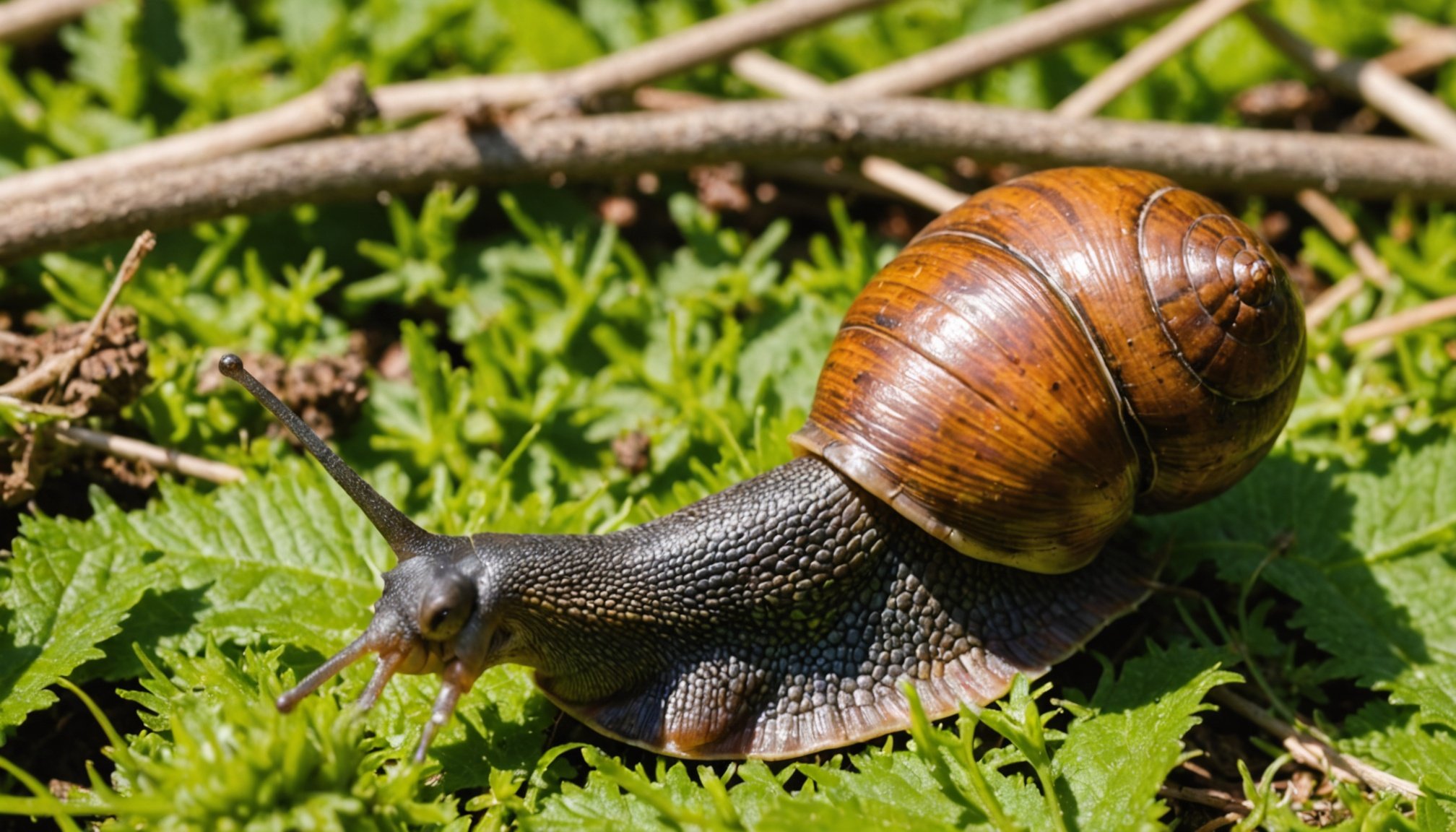Overview of Snail Infestations in UK Gardens
In UK gardens, snail infestations are a common nuisance, often impacting the health and aesthetics of plants. These garden pests thrive primarily in damp environments, feasting on a broad range of plant species, which can lead to substantial damage. Common culprits include the garden snail (Cornu aspersum) and the white-lipped snail (Cepaea hortensis), both known for their voracious appetites.
Several factors contribute to the rise in snail populations. The UK’s often mild and wet climate offers ideal conditions for snails to breed and proliferate. Furthermore, an increase in organic gardening and reduced pesticide use, while beneficial for the environment, has inadvertently allowed snail numbers to flourish unchecked. Overgrown vegetation and decaying plant matter also provide the perfect habitat for these garden invaders.
Recognizing the challenges of snail infestations is crucial for effective pest management. Integrated strategies such as organic snail control and the adoption of sustainable gardening practices can mitigate the impact of these pests. While challenging, understanding the nuances of snail behaviour and the factors contributing to their growth can aid gardeners in devising comprehensive plans to protect their gardens.
Utilization of Barriers and Physical Controls
Creating an effective snail deterrence strategy often involves employing physical controls and barriers in the garden. Barriers such as copper tape and crushed eggshells are popular as they create unfavourable surfaces for snails to cross, disrupting their movement routes. Additionally, installing sharp gravel or sand around plant bases can also help keep soil-dwelling snails at bay.
Incorporating these barriers into the overall garden design enhances the aesthetic appeal while also deterring pest invasions. Placing copper tape around pots and planters, and establishing narrow paths of abrasive material, can be both functional and visually pleasing elements of your garden.
However, the effectiveness of barriers relies heavily on maintenance. Regular checks to ensure these deterrents are intact and functioning are essential for long-term success. For example, refreshing crushed eggshells or replenishing sand and gravel patches helps maintain their deterrent properties, as weather conditions may impact their presence. By combining these elements with eco-friendly garden management techniques, gardeners can create a resilient environment less conducive to snail activity, ultimately achieving a healthy and vibrant garden space.
Effective Organic Treatments for Existing Infestations
Addressing existing snail infestations requires a multi-pronged approach using eco-friendly solutions. Let’s explore some effective methods.
Handpicking and Traps
Handpicking is a practical technique for small gardens. Collect snails during damp evenings or early mornings when they are most active. Maintain a watchful eye on plant bases and shaded areas where they hide. DIY traps, such as inverted grapefruit halves or beer traps, can also capture snails efficiently. Position these near problem spots, ensuring regular checks and disposal.
Natural Repellents
Natural repellents play a vital role in snail remediation. Sprinkling crushed eggshells or coarse sand around plants can create textures snails dislike. Additionally, brewing garden-safe garlic spray acts as a potent deterrent. Apply it to leaves and stems to repel these unwanted visitors without harming the plants.
Biological Control
Introducing natural predators is another eco-friendly avenue. The decollate snail preys on common garden snails, offering a sustainable solution. Ensure your garden hosts an environment favourable for predators by preserving biodiversity. Birds and beetles also act as biological controls, contributing positively to your garden ecosystem.
Monitoring and Maintaining Snail Control
Effective snail control demands consistent monitoring and sustainable garden practices. By snail monitoring regularly, gardeners can assess population levels and adapt their strategies to suit changing conditions. This involves observing the frequency of snail sightings and checking for plant damage. These observations help identify the extent of infestations and evaluate the success of implemented controls.
Seasonal changes significantly impact snail behaviour, making it crucial to tailor control methods accordingly. During damp months, when snails are more active, increasing pest control maintenance efforts may be necessary. This could involve intensifying natural deterrent applications or placing additional snail traps.
Building a sustainable garden management plan ensures long-term control and a healthier garden ecosystem. Incorporate organic methods such as companion planting and maintain cleanliness to prevent overgrown vegetation, which harbours snails. Regularly update the garden plan based on effective outcomes and new practices.
Key steps include:
- Conducting frequent inspections to track snail activity.
- Adjusting control approaches based on seasonality.
- Sustaining garden hygiene and employing preventative measures.
This proactive and adaptive approach not only mitigates current infestations but also safeguards the garden’s future against these persistent pests.
Organic Strategies for Preventing Snails
Creating an inhospitable environment for snails is a crucial part of organic prevention methods. Adjusting your garden management practices can significantly deter these garden pests. Snails thrive in damp, overgrown settings, so maintaining a tidy garden is essential. Regular pruning and removing debris can reduce hiding spots, making it less inviting for snails.
Companion planting serves as an effective natural deterrent. This technique involves growing certain plants together to repel snails. For instance, aromatic herbs like rosemary, thyme, and lavender can ward off these invaders due to their strong scents. Integrating these herbs within your garden not only enhances biodiversity but may also offer a protective barrier without resorting to chemicals.
Garden hygiene and consistent maintenance are pivotal in your snail management strategy. Clearing out decaying plant matter and ensuring proper drainage can minimize the moist environments preferred by snails. Regularly inspecting your garden for snail activity allows for quick response to infestations before they escalate.
Ultimately, these organic techniques can foster a healthier ecosystem. They encourage sustainable gardening practices while effectively keeping snail populations in check, leading to a more vibrant and resilient garden.





